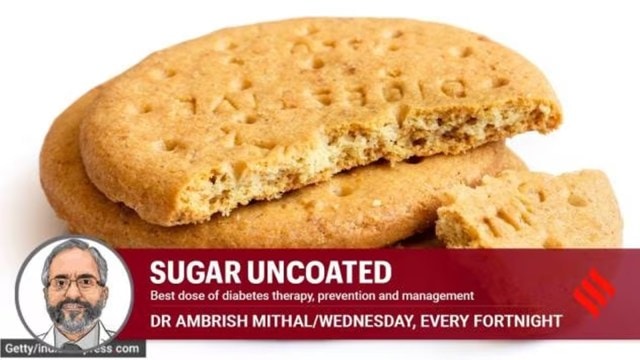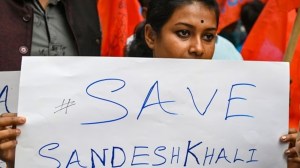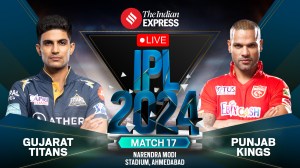- India
- International
Should diabetics have an evening snack?
Dr Ambrish Mithal, Chairman and Head, Endocrinology and Diabetes, Max Healthcare, on what you should snack on and when
 A person with diabetes should have snacks within the 15-30 grams of carbohydrate versus the 30-60 grams of carbohydrates recommended for meals. (Representational image/File)
A person with diabetes should have snacks within the 15-30 grams of carbohydrate versus the 30-60 grams of carbohydrates recommended for meals. (Representational image/File)Snacks can bump up our energy in the middle of a busy day and prevent us from overeating at the next regular meal. Typically, about 25 per cent of daily calories come from snacks. Choosing snacks wisely is, therefore, a must for good health as well as diabetes control and weight management.
But first, is snacking important for people with diabetes? If your diabetes is treated with insulin and medication that puts you at risk of hypoglycaemia (low blood sugar), you may need a snack in between meals to help keep your blood glucose in range. These snacks should contain fibre, proteins and good fat. This will help you feel full for longer periods and slow the digestion of carbohydrates, which will help stabilise your blood sugar levels.
A person with diabetes should have snacks within the 15-30 grams of carbohydrate versus the 30-60 grams of carbohydrates recommended for meals. And they should ideally have them before meals, mid-day or early evening.
Studies have shown that the quality of snacking is more important than the quantity or frequency of snacking. Thus choosing high quality snacks over highly processed snacks, which come with high sodium, sugar and trans fats, is preferable. Here are some tips and tricks for people with diabetes to enjoy a snack!
What are examples of healthy snacks?
Nuts and seeds: Replace the evening biscuits with a fistful of nuts (almonds, walnuts, pistachio), rich in good fats, protein and has high satiety value. Studies have shown that if we substitute carbohydrates with good fats, we reduce blood sugar spikes, blood pressure and promote heart health.

Fruits: Fresh fruits are loaded with antioxidants, fibre and satisfy sweet cravings. However, people with diabetes should not overload themselves with fruits as they contain a substantial amount of carbohydrates. So it is better to have them as mid-day or early evening fillers. Fruit juices should be totally avoided. Each fruit has different carbohydrate content and the portion size will vary accordingly. One has to limit carbohydrate intake to 15 gm in one serving with a maximum of two servings a day. Combining fruit with protein-rich yogurt enhances their benefits, since together they offer both probiotics as well as prebiotics (which feeds probiotics).
Roasted chana chaat or sprouts chaat: Roasted chana or sprouts are a good source of protein and fibre along with micronutrients. You could have it in the form of a chaat making it tangy and tasty.
Sattu: Sattu, or roasted Bengal gram flour, is very popular in the state of Bihar. A 100 gm cup will typically have 26 gm of protein and 18 gm fibre. A sattu drink is a filling mid-morning snack and will not lead to a spike in blood glucose value.
Eggs: Having one whole egg per day is safe even if you have blood pressure or any heart issue. An egg has a high satiety value and high quality protein. Eggs are not just to be had at breakfast, they can be a good snack too!
Hummus: This has carbohydrates but the chickpeas in it have enough fibre and protein to fill you up with a small scoop. Use a third of a cup as a dip for vegetables or as a spread on whole-grain crackers.
Which snacks are a no-no in diabetes?
· Packaged cookies
· Chips, namkeens
· Candy bars/ protein bars
· Mathri, Samosa, Namakpara
· Sweetened yogurt
· Sweetened beverages
· Juices
· Sausages
· Fried nuts and peanuts
The market is full of options labelled “diet food”, “diabetic friendly” or “no added sugar.” Don’t go by them but read the nutrition label carefully. Many of these items contain the same amount of fat and calories as regular foods. They give a false sense of security and often one ends up eating much greater quantities, which offsets any potential advantage of a slightly lower calorie content.
Apr 04: Latest News
- 01
- 02
- 03
- 04
- 05





























